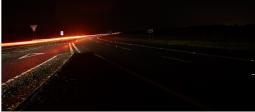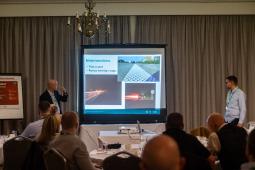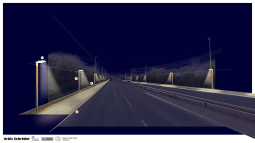Live Labs 2 blog – East Riding of Yorkshire Council’s Decarbonising Street Lighting project - progress update
This month’s blog is from Karl Rourke, one of the project leads for the East Riding of Yorkshire Council’s Live Lab.
Doesn’t time fly when you’re having fun? Along with our partners and collaborators across the UK, we are a year into the project already.
It has been an incredible first year and we have experienced a huge swell of interest in our project within the sector, as well as from the political domain. We’ve also seen strong buy-in from the manufacturing sector, including lines and stud manufacturers and street lighting equipment suppliers.
Year one research and important first steps
Our first year has primarily focused on developing our understanding of the challenges we face in trying to decarbonise street lighting, developing a design-led approach that accommodates all road and footway users, encourages use and promotes safety.
In this crucial first stage, primary test routes have been segmented and test beds identified for our team as well as our partners.
Across the main test routes, we have baselined the condition of our highways assets which are in no better or worse condition than those on any other road in the UK.
We have also installed a number of pilot test beds to non-lit sections of road. This step was to obtain materials baselining and to understand the visual effect of the new proposals before moving to the next stage and replacing street lighting with new visual indicators.
Prioritising safety and security
So far user feedback from these test beds has been extremely positive, although as these sections were previously non-lit the alterations have been improvements to the existing carriageway. They do however follow on from areas currently identified for de-illumination, so will show a continuation of improved road markings.
Exploring the safety implications of removing lighting at conflict zones has been our primary focus over the last year, however we now feel in a position where we are satisfied with the designs proposed and have achieved legal and insurance verifications.
With this essential aspect of the project complete, we have been able to turn our attention to the other issues concerning decarbonising street lighting.
Creating a new carbon assessment tool
We have teamed up with ‘Measure to Improve’ and Leeds University to create a carbon assessment tool and are well underway with baselining the existing infrastructure.
The result will be a decision-making tool for use at the point of design or replacement of street lighting installations.
It will baseline an existing installation on a new like-for-like basis and assess this against our proposed alternatives.
It will be able to factor in future knowns such as decarbonisation of the National Grid along with scheduled and reactive maintenance, to give an overall carbon and financial assessment of the installation options.
Moving beyond major highways
The East Riding project is not limited to just examining bypass and major A routes. In year two we will be exploring urban lighting, its impact on crime and the effects of night-time economies on public lighting decision making.
The links between lighting and crime have been widely debated and researched across the globe. Despite the volume of material, there still seems to be no coherent message from the research material available in the public domain.
Each method of testing the suggested link has been rigorously explored. Our aim is to bring all of this research together, to provide an informed message that guides future investigations in this area.
Street lighting and night-time economies
Lighting and night-time economies have not benefitted from the same levels of examination and very little comprehensive research has been undertaken in this area, so the tendency is to light these areas as if nothing else on that street exists.
In conjunction with our national partners, we have identified an opportunity to explore decarbonisation in this aspect of street lighting. At this stage we are looking at incorporating external lighting sources into road and pedestrian lighting, potentially reducing the required infrastructure and improving energy consumption whilst maintaining appropriate lighting levels for all users. This will form one strand of our work in the coming twelve months.
Pedestrians and cyclists
Footway and active travel route users will also benefit from our research and project findings, and we are already making exciting strides forward in this space.
Currently, these routes are lit as a by-product of lighting the overall streetscape, but we need to examine what happens when we do not light the carriageway.
As part of our Live Labs 2 project, we have brought together street lighting manufacturers in new and innovative ways, issuing a challenge to design and innovate new low carbon, pedestrian-focused lighting. Over the next two years we will be evaluating these proposed solutions, taking measurements and obtaining feedback from users with the aim of creating a viable standard for footway only lighting.
As part of our efforts, we will also be maintaining contact with other live lab projects to communicate our new knowledge.
Ultimately, the aim for the East Riding project is to imagine and model the bright future for decarbonised street lighting.
Further information
- For more information on ADEPT Live Labs 2: Decarbonising Local Roads in the UK, please look at the Live Labs 2 section on the website
- For more information about the Live Labs Project, please visit the East Riding of Yorkshire Council website



